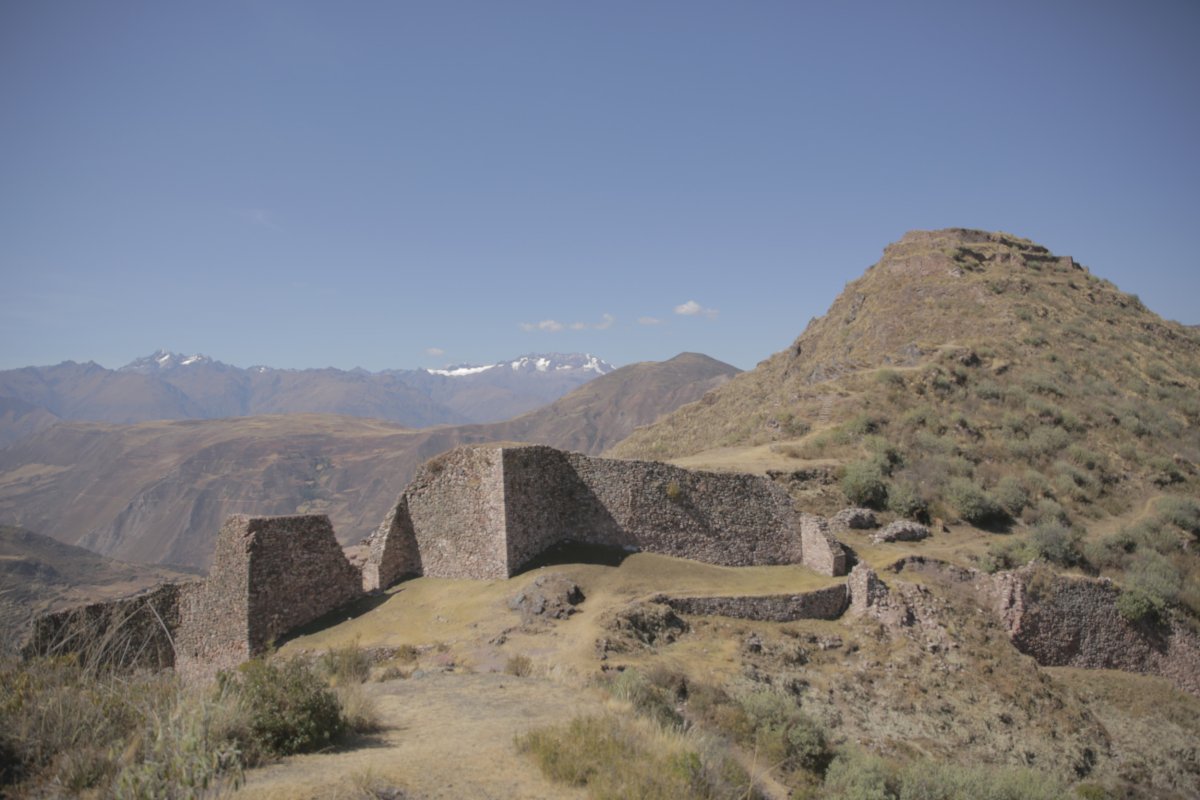Researchers have uncovered fascinating new insights into an ancient mountaintop settlement high up in the Peruvian Andes, which pre-dates the famous Inca site of Machu Picchu.
National Geographic explorer Albert Lin—along with archaeologists Adan Choqque Arce and Thomas Hardy—used a revolutionary technology known as LiDAR (light detection and ranging) to reveal the full extent of this city, which was settled by the Incas and the people that came before them (often referred to as the pre-Incas).
The settlement lies in an archaeological zone known as Wat'a—meaning "island" in the local Indigenous language—at an altitude of around 13,000 feet. This is around 5,000 feet higher than Machu Picchu, the crowning glory of the Inca civilization.
"It is very challenging to get there," Lin told Newsweek. "You're at around 13,000 feet of elevation and its mostly open landscape because there's not a lot of trees around, so you're basically baking in the high altitude sun, all the way up."
"When you're up there, you have these grand vistas—all the surrounding mountains that are really gorgeous—and the site itself, which sits above that mountain, is a perfect viewpoint down to all the different valleys that are coming up as a trade route, maybe possibly even towards the site that would one day become Machu Picchu."
The city has been investigated before using traditional archaeological methods, with researchers uncovering evidence of tombs, ceremonial plazas, residential areas and a large surrounding wall.

However, by conducting a LiDAR survey—the first time this technology has been used at the site—the archaeologists were able to reveal many more previously unseen features.
LiDAR essentially enabled the team to "see through" the thick shrubs and countless cacti that coat the mountaintop. The technology makes use of instruments fitted onto aircraft—in this case, drones—that fire pulses of laser light towards the ground hundreds of thousands of times per second. The data that is collected is then used to create detailed 3D maps that reveal the topography of the land and any ancient man-made features that are not normally visible.
Among these features, the team were able to identify signature Inca terracing, as well as circular structures associated with the pre-Incas.

"In one fell swoop, we can delete that shrub and all of sudden, the whole mountain became this terrace-shaped place, just like Machu Picchu—those terraces moving all the way up, although at a smaller scale, of course, and with less detail," Lin said. "You get this sense that the pre-Inca and the Inca... they moved mountains."
The ancient city is intriguing because—like at other sites in Peru—the Inca built on top of an earlier pre-Inca settlement. Furthermore, the researchers say that this site was, in a way, a template for Machu Picchu—which was constructed in the mid-15th century.
"See it as an evolution on their pathway towards Machu Picchu," Lin said. "I think it's quite an inspiring place to be."
"Lost Cities with Albert Lin" airs Sundays on National Geographic.
Uncommon Knowledge
Newsweek is committed to challenging conventional wisdom and finding connections in the search for common ground.
Newsweek is committed to challenging conventional wisdom and finding connections in the search for common ground.
About the writer
Aristos is a Newsweek science reporter with the London, U.K., bureau. He reports on science and health topics, including; animal, ... Read more
To read how Newsweek uses AI as a newsroom tool, Click here.








